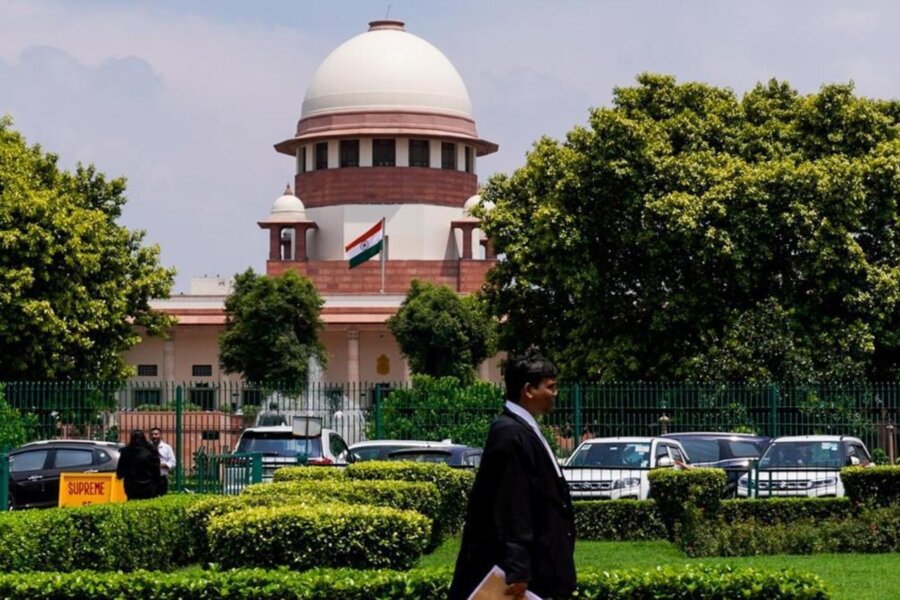Best Environmental Law & Compliance Lawyers in Central Islip
Share your needs with us, get contacted by law firms.
Free. Takes 2 min.
List of the best lawyers in Central Islip, United States
We haven't listed any Environmental Law & Compliance lawyers in Central Islip, United States yet...
But you can share your requirements with us, and we will help you find the right lawyer for your needs in Central Islip.
Find a Lawyer in Central IslipAbout Environmental Law & Compliance Law in Central Islip, United States
Environmental law and compliance in Central Islip covers federal, state, county, and local requirements that govern air quality, water quality, hazardous materials, waste management, land development, and natural resource protection. Central Islip is in Suffolk County on Long Island, which lies above a sole-source aquifer that supplies drinking water to the region. Because of the aquifer and local development patterns, regulators and courts often place special emphasis on groundwater protection, stormwater control, wetlands protection, and remediation of contaminated sites.
Key actors in the regulatory system include the federal Environmental Protection Agency - Region 2, New York State Department of Environmental Conservation - NYSDEC, New York State Department of Health, Suffolk County departments, and the Town of Islip planning and building offices. Each level has its own permitting, inspection, and enforcement authorities, and compliance frequently requires coordination across agencies.
Why You May Need a Lawyer
Environmental matters can be technical, carry significant liability, and involve complex administrative processes. People and businesses in Central Islip commonly need lawyers in situations such as:
- Property transactions that require environmental due diligence - for example, Phase I or Phase II environmental site assessments and negotiation of indemnities or cleanup obligations.
- Notices of violation, compliance orders, or enforcement actions from NYSDEC, Suffolk County, the Town of Islip, or EPA.
- Contaminated site investigations and remediation - including participation in New York State Brownfield Cleanup Program or negotiating scope, timing, and cost allocation among responsible parties.
- Permitting for construction, industrial operations, wastewater discharge, air emissions, hazardous waste management, and stormwater controls.
- Defense against citizen suits, civil penalties, or criminal charges related to environmental violations.
- Land-use and wetland disputes, SEQRA compliance for projects that trigger environmental review, and appeals of local planning or zoning decisions when environmental concerns are implicated.
- Seeking damages or injunctive relief against a polluter for property damage, personal injury, or nuisance caused by contamination or ongoing pollution.
Local Laws Overview
The legal framework applicable in Central Islip combines federal statutes and state law with local ordinances and county rules. Important elements to know include:
- Federal laws that often apply - Clean Water Act, Clean Air Act, Resource Conservation and Recovery Act - RCRA, Comprehensive Environmental Response Compensation and Liability Act - CERCLA or Superfund, Toxic Substances Control Act - TSCA, and federal wetlands protections where federal permits are required. These federal rules often set baseline standards and enforcement authority for major releases, discharges, and hazardous waste management.
- New York State requirements - NYSDEC administers many statewide programs, including the State Pollutant Discharge Elimination System - SPDES - for water discharges and stormwater, state air permits, hazardous waste oversight, contaminated site cleanup programs such as the Brownfield Cleanup Program, and environmental review under SEQRA - the State Environmental Quality Review Act. The New York State Department of Health plays a role when contamination affects public health or drinking water.
- Suffolk County and Town of Islip rules - Suffolk County departments enforce local public-health and septic/sewer regulations and have groundwater protection programs that can impose stricter standards than state or federal rules. The Town of Islip administers zoning, site-plan review, building permits, and local wetlands and buffer requirements. Local boards and planning agencies may require mitigation, stormwater plans, or special use permits tied to environmental protections.
- Special local contexts - Long Island’s sole-source aquifer means groundwater protection and septic system controls are particularly important. Redevelopment or industrial properties may be subject to brownfield incentives or special cleanup obligations. Projects that alter wetlands, coastal resources, or stormwater runoff must account for multiple regulatory reviews.
Frequently Asked Questions
What are the most important environmental permits for a business in Central Islip?
Permits commonly required include SPDES permits for wastewater and stormwater discharges, air permits for emissions from industrial sources, hazardous waste generation and transport permits under RCRA/state rules, and local permits for land disturbance and wetlands impacts. The exact permits depend on the business activities, materials handled, and site characteristics.
How can I tell if a property in Central Islip is contaminated?
Start with a Phase I Environmental Site Assessment to review historical uses, regulatory records, and visible conditions. If the Phase I identifies potential concerns, a Phase II assessment with sampling of soil, groundwater, and building materials is the next step. You can also check NYSDEC and EPA databases for open spill incidents, site remediation records, and registered facilities. A qualified environmental consultant can help interpret results.
Who can be held responsible for contamination - buyer, seller, landlord, or tenant?
Liability can fall on current owners and operators, past owners who caused releases, and sometimes tenants or other parties with control over hazardous activities. New York law and federal CERCLA create scenarios for cost recovery and contribution among potentially responsible parties. Contracts, purchase agreements, indemnities, and involvement in a state cleanup program can affect risk allocation. Legal advice and careful contract drafting are critical in transactions.
What should I do if I receive a Notice of Violation or compliance order?
Do not ignore the notice. Preserve all records and communications about the alleged violation. Contact an environmental attorney promptly before responding, since responses may affect liability and appeal rights. Your attorney can assess the allegation, recommend immediate corrective actions, negotiate compliance schedules, and represent you in administrative proceedings or settlement talks.
How long does cleanup under New York programs typically take?
Cleanup timelines vary widely depending on the nature of contamination, site size, remediation method, and regulatory review. Some cleanups take months if only limited action is needed, while complex sites can take years of investigation, design, and remediation. Enrollment in programs like the Brownfield Cleanup Program can provide a clear regulatory pathway and incentives, but still requires time for review and approval.
Can residents or neighbors sue for damages from environmental contamination?
Yes, residents may have civil claims for property damage, personal injury, nuisance, or trespass caused by contamination or pollution. Options include private litigation and participation in public enforcement actions. Success depends on proving causation, exposure, and damages, so consultation with an attorney and expert witnesses is typically necessary.
What is SEQRA and when does it apply in Central Islip?
SEQRA is New York’s State Environmental Quality Review Act. It requires environmental review for certain government actions like permits, approvals, or funding that could have significant environmental impacts. Local planning boards and town governments in Central Islip must follow SEQRA when reviewing projects that may affect the environment. SEQRA procedures include determining significance, preparing an environmental impact statement if necessary, and considering mitigation.
How can I find out if my well or drinking water is safe?
If you are concerned about private well water, contact the Suffolk County Department of Health Services for guidance on testing and known local contamination issues. The New York State Department of Health also provides drinking water standards and resources. Testing by an accredited lab can identify common contaminants; if contamination is found, regulatory agencies can advise on next steps and potential remedies.
What role do brownfield incentives play in redevelopment?
New York State’s Brownfield Cleanup Program and other incentives can help offset cleanup costs and provide tax credits, liability protections, and financing options for redeveloping contaminated properties. Participation requires entering an agreement with NYSDEC and meeting work and reporting requirements. Lawyers often assist clients in evaluating whether program enrollment makes sense for a project.
How do I choose the right environmental lawyer for my case?
Look for attorneys with experience in New York environmental law, familiarity with NYSDEC procedures, and a record of handling matters similar to yours - whether that is remediation, permitting, enforcement defense, or transactional due diligence. Ask about their experience in local courts and administrative forums, typical fee structures, and whether they work with scientific consultants. An initial consultation can help assess fit and strategy.
Additional Resources
For people seeking more information or official guidance in Central Islip, useful resources include federal, state, county, and local agencies as well as non-profit and professional organizations. Relevant agencies and programs include EPA - Region 2, New York State Department of Environmental Conservation - NYSDEC, New York State Department of Health, Suffolk County Department of Health Services, the Town of Islip planning and building departments, and the NYS Brownfield Cleanup Program. Professional resources include state and local bar associations environmental sections, local environmental consultants, and community groups focused on clean water, air, and land protection. For records and reports, New York’s and Suffolk County’s permit and spill databases, and NYSDEC site remediation records are key starting points. Freedom of Information Law - FOIL - requests can be used to obtain government documents when needed.
Next Steps
If you need legal assistance with an environmental matter in Central Islip, consider these steps:
- Gather documents - collect deeds, leases, prior environmental reports, correspondence with regulators, notices, permits, and any test results or remediation plans.
- Get a preliminary site assessment - an environmental consultant can perform Phase I or Phase II investigations to clarify risk and next steps.
- Contact an environmental attorney - seek a lawyer with New York and Suffolk County experience to discuss legal strategy, regulatory exposure, timelines, and cost estimates. Ask about fee arrangements, including hourly rates, retainer requirements, and whether they use contingency or fixed-fee structures for parts of the work.
- Preserve evidence and avoid admissions - do not dispose of records, alter potential evidence, or make unadvised statements to regulators or claimants without counsel.
- Coordinate with technical experts - attorneys often work with engineers, hydrogeologists, and industrial hygienists to build a response plan, negotiate with regulators, or defend claims.
- Consider early engagement with regulators - in many cases a cooperative, documented approach with NYSDEC or county agencies leads to more practical cleanup plans and better outcomes than contested enforcement battles.
Taking informed, prompt action can reduce legal and financial risks. If you are unsure where to start, scheduling an initial consultation with an experienced environmental lawyer is a practical first step.
Lawzana helps you find the best lawyers and law firms in Central Islip through a curated and pre-screened list of qualified legal professionals. Our platform offers rankings and detailed profiles of attorneys and law firms, allowing you to compare based on practice areas, including Environmental Law & Compliance, experience, and client feedback.
Each profile includes a description of the firm's areas of practice, client reviews, team members and partners, year of establishment, spoken languages, office locations, contact information, social media presence, and any published articles or resources. Most firms on our platform speak English and are experienced in both local and international legal matters.
Get a quote from top-rated law firms in Central Islip, United States — quickly, securely, and without unnecessary hassle.
Disclaimer:
The information provided on this page is for general informational purposes only and does not constitute legal advice. While we strive to ensure the accuracy and relevance of the content, legal information may change over time, and interpretations of the law can vary. You should always consult with a qualified legal professional for advice specific to your situation.
We disclaim all liability for actions taken or not taken based on the content of this page. If you believe any information is incorrect or outdated, please contact us, and we will review and update it where appropriate.







